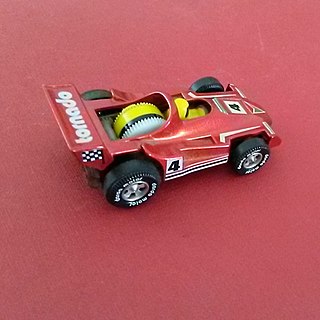Top Qs
Timeline
Chat
Perspective
Pullback motor
Simple clockwork motor used in toy cars From Wikipedia, the free encyclopedia
Remove ads
A pullback motor (also pull back, pull back and go or pull-back) is a simple clockwork motor used in toy cars. A patent for them was granted to Bertrand 'Fred' Francis in 1952 as a keyless clockwork motor.[1][2]

Pulling the car backward winds up an internal spiral spring; a flat spiral rather than a helical coil spring. When released, the toy car is propelled forward by the spring. When the spring has unwound and the car is moving, the motor is disengaged by a clutch or ratchet and the car then rolls freely onward.[3] Most of these cars are otherwise free-rolling. Winding them up requires them to be pushed downwards, engaging the clutch.[3] As the motor is only engaged for winding while held down, the complete winding must be completed in one pass, unlike the flywheel motor. Some motors have an internal one-way clutch that allows winding with a back-and-forth motion.[3]
Some pullback motors, usually intended for racing in pairs, have used a catch and release mechanism to retain their springs. These may be wound separately, then launched together by releasing their spring triggers. Darda toys use such a mechanism for their Stop'n'Go motor.[4]
Remove ads
References
Wikiwand - on
Seamless Wikipedia browsing. On steroids.
Remove ads
